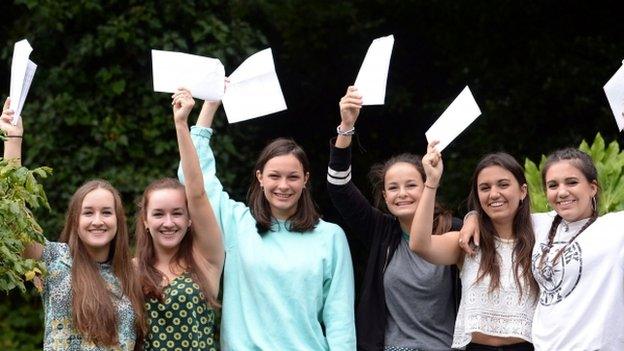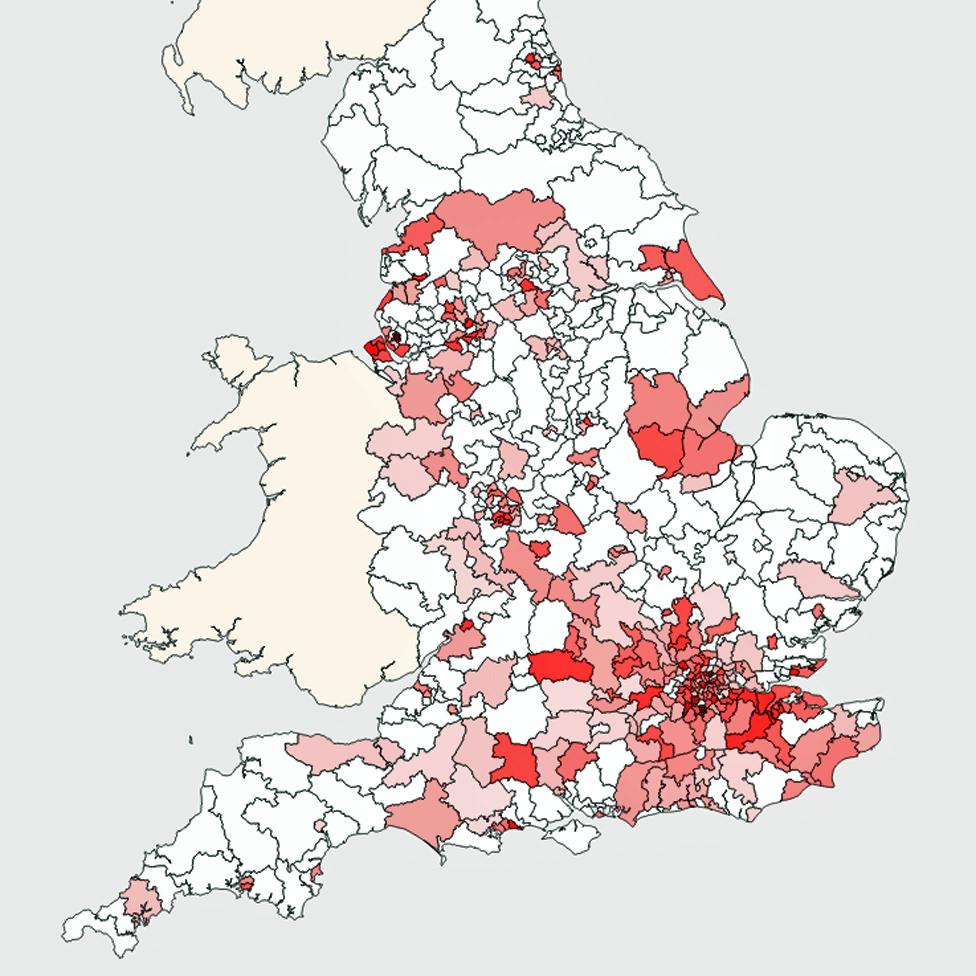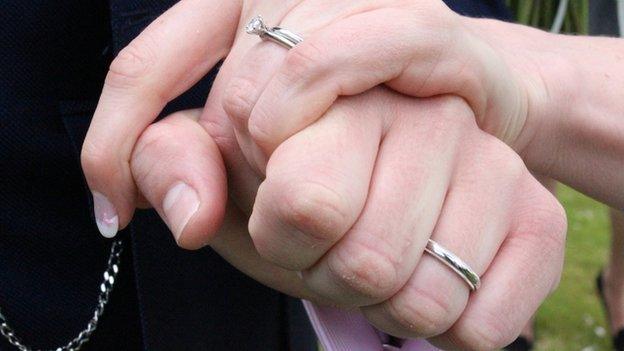Girls 'get better GCSE results in all-girl schools'
- Published

Girls' school leaders say girls have more confidence when taught in a single-sex school
Girls at single-sex state schools in England get better GCSE results than those in mixed schools, according to an analysis of the most recent exams.
And the advantage for girls' schools remains even when other factors are taken into account, such as social background or a selective intake.
Girls from poorer families in single-sex schools got better GCSEs than their counterparts in mixed schools.
The study showed much less advantage for boys in single-sex schools.
The high performance of girls in single-sex schools has been identified by education data analysts SchoolDash, external, in a breakdown of GCSE results published last week.
In terms of overall GCSE results, single-sex state secondary schools, about 11% of the total, performed much better.

Girls are more likely to get better GCSE results than boys
In mixed schools, 55% of pupils got five good GCSEs including English and maths, while in single-sex schools the proportion was 75%.
Among these single-sex schools, girls' schools got better results.
But there are some underlying factors skewing these results, such as:
grammar schools are more likely to be single-sex
co-educational schools have a higher proportion of poorer pupils
girls are more likely to get good results
Better results
When these and other factors are taken into account, girls' schools still showed a clear advantage, with greater levels of "value added" in terms of pupils' progress and better results for poorer pupils.
The difference in like-for-like comparisons, the researchers say, was equivalent to girls' schools being three percentage points ahead of mixed ones.

Where single-sex schools are concentrated around the country
Boys in single-sex schools were ahead of mixed schools in raw GCSE results, but they did not show a significantly better performance once other factors had been taken into account.
The analysis also showed single-sex schools were concentrated in London and the South East.
Capital benefits
London's GCSE results were the best in England - and the study showed almost a third of secondary schools in the capital were single-sex, far higher than anywhere else.
Girls' schools in London did particularly well in this year's GCSEs - with single-sex schools in the capital an average 12 percentage points higher than their counterparts

London has a higher concentration of single-sex schools than anywhere else in England
The study described a "halo" of single-sex schools around the edge of London, including those in the independent sector and grammars.
There were other clusters, such as around Liverpool, but smaller numbers in northern England and the Midlands, and overwhelmingly in urban rather than rural settings.
Single-sex schools had a higher proportion of ethnic-minority pupils, but a lower than average proportion of deprived pupils, as measured by eligibility for free school meals.
Teachers in single-sex schools tended to be older, better paid and taking significantly less sick leave than their counterparts in mixed schools.
SchoolDash founder Timo Hannay said: "It would now be interesting to try and understand why girls at girls' schools tend to do better than their peers, and what the vast majority of mixed schools might be able to learn from this phenomenon."
Social 'disadvantage'?
Earlier this month, Richard Cairns, head of Brighton College, said girls at single-sex schools would be at a "huge disadvantage" if they could not feel confident talking to boys.
Single-sex schools were described as a "deeply unrealistic world".

A long-term study says women who attended all-girls' schools were no more or less likely to marry
But Caroline Jordan, president of the Girls' School Association, claimed the analysis of this year's results as a vindication of an all-girl education.
She said teachers with classes of girls could focus their teaching style on what worked best for girls.
"Girls are more collaborative, they like lessons to be more discussion-based," said Ms Jordan, who represents schools in the independent sector, where there is a long tradition of single-sex schools.
And an all-girl environment allowed them to "escape gender stereotyping", by, for example, encouraging more girls to pursue science subjects.
"Girls can be more confident in themselves, they don't have to become a particular type of girl, they're able to relax more," she said.
The claim girls in single-sex schools were more likely to study science was backed by long-term tracking studies, said Alice Sullivan, director of the Centre for Longitudinal Studies, at the UCL Institute of Education, in London.
"We found that girls from single-sex schools were more likely to take male-dominated subjects such as maths and science at school. Girls who had attended single-sex schools also had slightly higher wages than their co-ed peers in mid-life," said Prof Sullivan.
"People often make claims about the consequences of single-sex schooling for relationships between the sexes without referring to any evidence," she said.
"We found that women who attended single-sex schools were no more or less likely to marry than those in co-educational schools."
- Published5 January 2016
